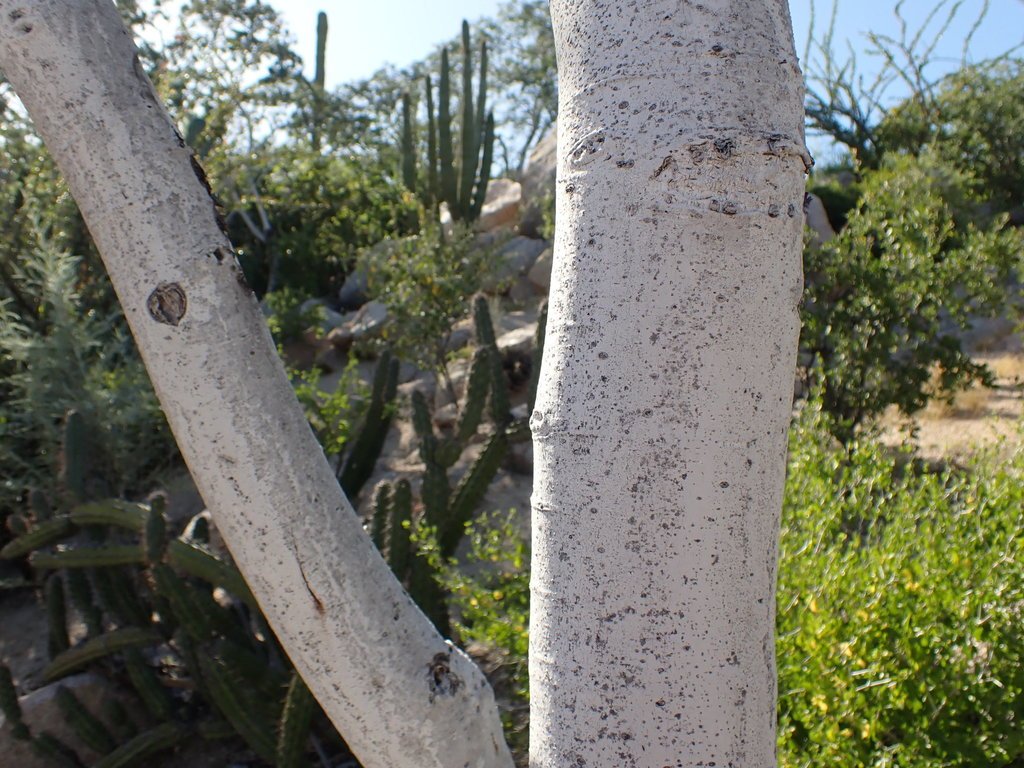Baja Palo Blanco
Lysiloma candida
Family: Fabaceae
CHARACTERISTICS
A thornless, tall legume reaching 30+ feet. The creamy-white, globose clusters of flowers bloom in March through May and perfume the air with a light, spicy fragrance, followed by legume pods. Plants are evergreen in warm microclimates but may lose leaves with cold or drought. With age, plants develop a white trunk, the newer limbs will be darker-colored. This plant is rare in the trade.
LANDSCAPE USE
Specimen tree.
GROWING CONDITIONS
AN EXPLANATION OF TERMS USED
SUN full sun
WATER moderate to low water
SOIL not picky, but well-drained
HARDINESS hardy to 20-25°F, plant in a warm microclimate
BASIN middle zone
CONTAINER not recommended
NUTRITION low
MAINTENANCE very little
ECOLOGY
Flowers attract many nectar-seeking pollinators.
ETHNOBOTANY
Not much is known about the use of this plant.
NATURAL DISTRIBUTION
This plant is a near-endemic to the Baja California Peninsula in Mexico, with a small occurrence in Sonora. On the peninsula, it occurs from Rancho El Barril in southeast Baja California state, along the gulf side of the peninsula into Baja California Sur, reaching the Cape region. It is also found on the adjacent islands in the Gulf of California. In Sonora, it is found on the west coast facing the Gulf.
TAXONOMY AND NAME
This species is in the Fabaceae, the legume family. There are 10 accepted species in the genus Lysiloma which range from Arizona and New Mexico through Mexico and Central America to Costa Rica, and in Florida, Cuba, Hispaniola, the Bahamas, and Turks and Caicos Islands.
The genus name Lysiloma refers to the open/splitting nature of the pods of lysiloma. Candida means exceedingly white.
The mature trunk becomes white with age, different than the Sonoran Palo Blanco, which has shedding bark which exposes a shiny white trunk underneath. Photo by Morgan Stickrod, iNaturalist.
White puffball flowers occur in spring, photo by Jose Luis Leon de la Luz, iNaturalist
Crinkly pods follow the flowers, photo by Lauren Harter, iNaturalist
This species occurs almost entirely in Baja California with the exception of a small population in Sonora. Photo by Christian Schwarz, iNaturalist





